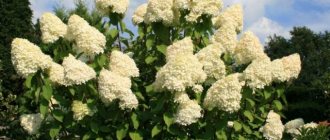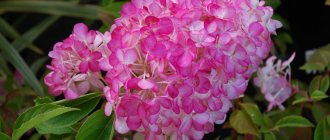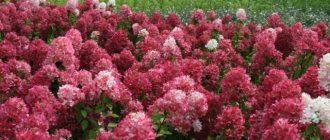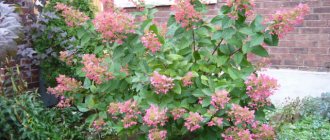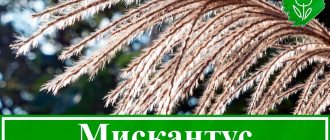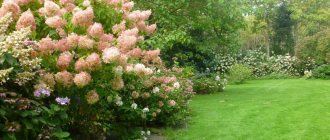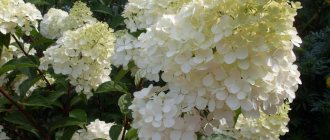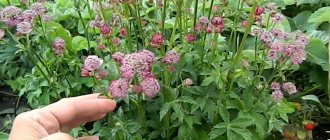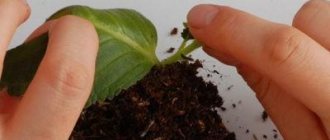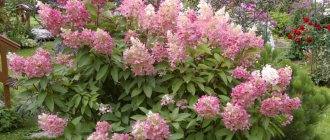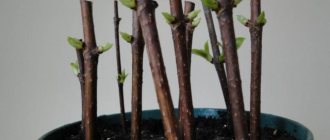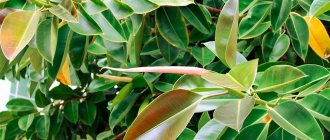Plants » Flowers
1
274
Article rating
Kira Stoletova
In 2013, Dutch breeders introduced the Polar Bear hydrangea variety. It was created by crossing the popular varieties Grandiflora (Large-flowered) and Lime-light. From the first parent the hybrid received large flowers, from the second - powerful, non-drooping stems.
Hydrangea polar bear description
Origin
Patent PP25837 states that the new variety of Hydrangea paniculata 'Polar Bear' 'WRHPBB2' is the product of a planned breeding program conducted by Inventor in Lend, the Netherlands. The goal of the breeding program was to develop new hydrangea varieties with strong stems and large, attractive inflorescences.
The new cultivar 'WRHPBB2' is the result of open pollination in the spring of 2005 of Hydrangea paniculata 'Barbara', described in the US patent Plant. No. 13606, with an unknown hydrangea variety.
Landing Features
Before planting, you should choose a place for the Polar Beer hydrangea. The variety prefers open, well-lit areas; it is better to place it oriented to the south or east. It is important to exclude limestone content in the soil. It is acceptable to be located in the shade, near outbuildings or a fence, next to dwarf trees. Hydrangea should not be planted under the shade of large deciduous trees. It is better to additionally protect young seedlings from strong wind gusts; for this, the plants should additionally be fixed on supports.
Deadlines
In order for the plant to grow well, you need to adhere to certain rules when organizing planting. The optimal time for it is early spring or mid-autumn. In the latter case, you will have to additionally worry about organizing reliable shelter for the seedling for the winter.
Attention! When choosing a site for planting, keep in mind that hydrangea needs intense lighting. She should receive light for 6 hours.
Planting in autumn is justified only for warm regions. In central Russia, the Urals and Siberia, it is better to carry out all work in the spring, orienting it towards April. In this case, the young seedling will have enough time to strengthen the root system and fully develop.
Selecting a location
Hydrangea loves fertile, additionally enriched and well-moistened, drained soil. The second requirement is good lighting, and the third is protection from strong wind gusts.
https://sadpalitra.com/upload/iblock/5af/5af21269336323032874f98812728d0b
It is permissible to place the crop, forming an ensemble protected by other, stable shrubs. As the hydrangea grows, when its shoots and branches become stronger, the plants can be removed to an open area.
Preparation of planting material
The purchased seedling should be carefully examined and its condition assessed. A visual inspection will eliminate pest damage and ensure the health of the crop. If there is a suspicion of infection, it is better to keep the plant in a solution of potassium manganese. This disinfectant component will prevent further progress of the disease.
Attention! Buy planting material from trusted sellers who value their reputation. Purchasing from spontaneous markets does not guarantee that the plant will flourish according to its variety.
Landing technology
Before planting, you need to prepare a hole with a size of 40*50*50 cm. The preparation process takes about two days. Initially, you need to dig a hole and moisten the substrate well by pouring 2-3 buckets of settled water into it. The planting hole is left in this form for a day and the planting work begins the very next day.
A mixture intended to fill the recess is pre-prepared. To create it use:
- peat – 1 part;
- humus - 2 parts;
- sand – 1 part;
- leaf soil - 2 parts.
Fertilizers are also added to the pit. You can use potassium sulfate, superphosphate and urea. A seedling is planted in the resulting composition and its roots are carefully ignited, sprinkled with soil and provided with additional stability.
https://i.pinimg.com/originals/b9/87/3d/b9873d16f49cb8fadd987187f2cd21bb
Attention! If the planting site and soil are chosen correctly, the plant will not require replanting.
Landing
Fertile, sufficiently moist, well-drained, neutral soil is suitable for planting; Polar Bear hydrangea can grow in sun and partial shade.
The interval between bushes is 150 cm. Planting in open ground can be done throughout the growing season, but planting in April or August is recommended.
In a sunny location, deep watering will be required every day.
Shrubs look impressive when planted individually or in groups, along paths, walls, fences or in a large group. Looks good next to the recreation area - gazebos, terraces, benches. Frost resistance ensures abundant flowering every year.
Hydrangea Polar Bear: description of the variety and characteristics
Paniculate hydrangea Polar bear: photo of the variety
The variety of paniculata hydrangea Polar Bear takes very good care of, although it is considered a very unpretentious plant to grow. Its main characteristics include fairly good resistance to temperature changes, either more or less, and also has a high level of immunity to common diseases and harmful insects. This plant will also be a wonderful helper in apiaries, as it is considered an excellent honey plant. This subspecies was created by crossing two types of hydrangeas, Grandiflora and Lamlight. From one subspecies, the Polar Bear hydrangea variety borrowed large and beautiful inflorescences, and from another, remarkable immunity to diseases and adverse weather conditions.
A huge plus in the Polar Bear hydrangea variety is that it did not take the shortcomings of its fellows. So, for example, unlike Grandiflora, which has rather thin branches that break due to heavy flowers, this variety has much stronger and more stable branches, which allows it to withstand the heavy weight of the inflorescences on its own, without the help of additional support.
Hydrangea Polar bear can grow up to two meters in height, and with a diameter of 1.5 meters or more. This fact must be remembered when planting seedlings, and leave more space for them, since planting too close will negatively affect not only the appearance of the plant, but also its overall well-being. With such a planting, they may not receive enough light, moisture, air and nutrients, so take this point into account. The shrub has fairly strong, rigid and straight shoots that can easily support a mass of inflorescences, as mentioned earlier. The leaves have an oblong shape, a bright and rich green hue, which remains unchanged even in autumn.
The inflorescences of the Polar Bear hydrangea have a dense structure, compact, cone-shaped with a diameter of up to approximately 40 centimeters, as well as with large sterile flowers with a diameter of more than three centimeters and very small fruit ones. Very small fertile flowers fall off quite quickly and as a result, a shrub is left completely covered with large inflorescences. At the beginning of the flowering period, the flowers have a pistachio hue, which after a while changes to white, and then to pink.
The flowering period of the Polar Bear hydrangea variety begins in mid-July and lasts until October, and sometimes until November.
Care
Caring for Polar Bear hydrangea involves proper watering and radical pruning, getting rid of weaker and thinner shoots.
The shrub must be provided with sufficient water during flowering. Application of general purpose fertilizers in spring and fertilizing, for example, Azofoska, 1 tablespoon per 10 liters of water, depending on the soil, once every two or three weeks.
It is preferable to cover the soil around the bush with mulch (for example, conifer bark). The bush does not need special protection for the winter; you can build small mounds of bark, which will also protect the roots from frost.
Fertilizer
Hydrangea Candelight - variety description, planting and care
It is necessary to feed hydrangea in 4 stages:
- In the spring, fertilizing during planting;
- At the end of the spring, when buds appear, specialized mixtures containing potassium, urea, and superphosphate are used for fertilizer. A couple of weeks after the first feeding, it is necessary to fertilize the soil again for better flowering.
- In July, it is necessary to use complex fertilizers together with abundant soil moisture;
- In late autumn, when preparing hydrangeas for wintering, specialized fertilizer mixtures are used.
Important ! Between the end of May and the beginning of June, special feeding is required for better formation of inflorescences.
To prepare the fertilizer, you need to mix the following ingredients in 10 liters of water:
- superphosphate - 20 g;
- potassium nitrate - 10 g;
- ammonium nitrate - 10 g.
Soil enrichment can also be done using 10 liters of slurry mixed with 1 kg of mineral fertilizers.
Throughout the summer period, it is desirable to fertilize with the following composition per 2 m²:
- 160 g – superphosphate;
- 80 g – potassium sulfur.
This hydrangea variety prefers a variety of types of fertilizers.
Trimming
The plant can be grown as a dense bush, then in early spring a fairly intensive pruning is carried out, cutting off all shoots up to 50 cm from the ground. You can also grow the Polar Bear variety as a small standard tree.
Hydrangea paniculata Polar Bear blooms on annual shoots, so it is not damaged by flower buds during spring frosts. Thanks to this, it blooms reliably every year.
For more abundant flowering, pruning is required in early spring, cutting the shoots to a third of their length. Pruning stimulates shoot growth, also promotes the creation of larger inflorescences and ensures abundant flowering. The inflorescences are also decorative after flowering, ideal for dry bouquets. Flowers left on the bush also decorate the bush in winter.
Recommendations for cultivation
This variety of paniculate hydrangea is partial to sunlight. Taking into account this feature, it is advisable to place the plant in that part of the garden where good lighting is maintained in the first half of the day. In the afternoon, partial shade should reign in the area with bushes, which can be arranged artificially. Protect the crop from cold drafts - they provoke the appearance of diseases and slower growth of shoots. Planting can be done both in spring and autumn. In the second case, it is important to do it before frost begins, otherwise the bush may die. In addition, crops planted in the garden in the fall need good shelter.
The best soil for Dutch hydrangea is acidified, with a high degree of fertility. If possible, plant the Polar Bear in black soil. The variety is also loyal to sandy loam soil and grows well on loam. To enrich the soil with nutrients, add humus, peat and mineral fertilizers to the hole. The recommended depth of the planting hole is 40-50 cm. To avoid stagnation of moisture at the bottom of the hole, a layer of pebbles or expanded clay is required. You will have to spend two days planting the plant. First, dig a hole and pour a couple of buckets of water into it. The next morning, add nutrients and mix them with the soil. Plant the crop by straightening the roots and covering them with soil. Afterwards, be sure to water the plant. Remember that hydrangea does not tolerate alkaline soils. In addition, plants of this variety must be planted at a sufficient distance from each other to provide each of them with normal air circulation and prevent the inflorescences from being crushed.
The moisture-loving Polar bear requires regular watering, carried out 1-3 times a week. Pour up to two liters of settled, not cold water under the bush. You can add potassium permanganate to it, achieving a weak solution to protect the root system from rot. After watering, the soil around the Polar Bear must be loosened and then mulched with peat and crushed pine bark. If it is necessary to acidify the soil, use spruce needles. The culture also requires periodic weeding.
In order to form larger inflorescences in large quantities, the bush should be fed. In the spring, organic fertilizers are applied to it, for example, mullein, nitrogen concentrate. At the stage of formation of buds on the plant, mixtures rich in phosphorus, nitrogen and potassium are used for feeding. July is the time to introduce a mineral complex under the bush. In the fall, before the onset of cold weather, the blond beauty is treated with a specialized fertilizer intended for feeding hydrangeas specifically.
Elegant shrubs must be pruned. This procedure is performed in the spring to thin out the dense crown. All weak, as well as dead and diseased shoots are removed, while strong branches are pruned to five, at least three buds. The polar bear is covered for the winter only if it is cultivated in regions with a harsh climate or where there is little snowfall in winter. A layer of peat is placed under the bush, and the crop itself is insulated with straw or spruce branches. You can also sprinkle it with additional snow - this will enhance the heat retention effect.
With strict adherence to recommendations for care and cultivation, diseases and insects rarely attack ornamental shrubs. But if this does happen, then the following problems make themselves felt: powdery mildew, tracheomycosis wilt, chlorosis, septoria, various types of rot, the appearance of snails, spider mites, nettle weevils, thrips. They need to be combated with solutions of fungicides and insecticides, which are used to spray hydrangeas. If desired, this treatment can also be used for preventive purposes three times during the warm season.
The polar bear is propagated by layering, division of rhizomes, cuttings, and seeds. The second method is most widespread, since after pruning the crop there are many shoots left that are suitable for propagating shrubs in this way, and carrying out this procedure will not cause any difficulties.
Reproduction
To effectively propagate plants, three main methods are used. The most popular is cuttings. But, in the case of the Polar Bear hydrangea, it is not the most effective. It is much easier to achieve the desired results when dividing the rhizomes.
Cuttings
This method is considered the most popular because of its simplicity. Planting material can be obtained after pruning; then it is enough to simply root it. To do this, prepared shoots are planted in small cups and a greenhouse is organized for them - creating the most even microclimate. When planted in autumn, the shoots should begin to grow by spring. They can be planted in the ground only after stable warming. If the preparations are received in the spring, they will have to be grown to the state of young seedlings at home - within 1 year.
Layerings for propagation
The method of rooting cuttings is also considered promising. The essence of the method is that the branches of the plant are bent away from the bush, but not separated from it. The shoots are buried in the area of the trunk circle, pinned and waiting for rooting. Only after this the cuttings are cut off and replanted. Manipulation can be carried out in spring and autumn.
Rhizome division
This method is used quite rarely because it is considered dangerous for the mother plant. According to gardeners, after receiving a shoot, hydrangea will take at least a year to recover, but this is wrong. In order for the bush to quickly come to its senses, division should be carried out in the fall, after flowering has completed.
The bush, together with the earthen lump, is dug out from the substrate and the root children are carefully removed. After this, the hydrangea is buried back into the soil and subsequent care is provided. If the shoot is small, it can be grown at home until next winter. Healthy and full-fledged bushes can be planted immediately after separation. The main thing is not to forget about the rules for ensuring a full winter.
https://fermilon.ru/wp-content/uploads/2019/10/image007-54
Hydrangea Polar Beer: reviews from gardeners about growing
Anna, Novosibirsk: I haven’t met a single person who didn’t like hydrangea. I have several varieties growing in my dacha, including the paniculate hydrangea Polar Beer. Beautiful, successful, frost-resistant, does not freeze. Her color is very original - I really like it, and so does everyone who sees her. What a sight for sore eyes!
Yulia, Irkutsk: For many years I admired hydrangea in photos and in bouquets, but was afraid to plant it in my garden. But, having plucked up courage and read positive reviews about Polar Beer hydrangea and its frost resistance, I planted it anyway. What a beauty this is! Hydrangea is simply an incredible plant. It grows normally, does not require special care, so I am completely satisfied.
Preparing for winter
When it gets cold outside, you need to take care of wintering your hydrangea in advance. The Polar Bear variety has high frost resistance (up to –40°C). Despite this, the bush should be covered for the winter, especially if these are young bushes that are still sensitive to temperature changes .
Before frost sets in, the soil in the tree trunk circle needs to be mulched with peat, sawdust and pine needles. The mulch layer should be approximately 20 cm. Young bushes should be covered with spruce branches or additionally covered with burlap. Such methods of shelter make it possible to protect the bush not only from the cold, but also from strong winds.
Did you know? The name hydrangea comes from two words, which translated mean “vessel” and “water,” which indicates the plant’s moisture-loving nature.
Paniculata hydrangea "Polar Beer": planting a bush
When planting or replanting hydrangeas, take into account the recommendations for the site. It should be well lit. Lime impurities are not allowed in the soil. It is preferable to plant hydrangea bushes near high fences, buildings or trees, which would take on the function of a “shading wall” in the future.
For this variety, this recommendation is not a mere formality, but a guide to action. The fact is that if the Polar Beer hydrangea bush is exposed to sunlight for a long time during the day, the abundance of flowering will significantly decrease, and in the near future it will stop altogether.
Throughout its life, the bushes of the plant must be protected from sharp gusts of wind. Branches may break off under the weight of the inflorescences. Therefore, it is worth creating a support for them, in the form of false logs or securing them with twine.
On a note!
Panicle hydrangea "Polar Bear" prefers abundant and constant watering. This should not be forgotten, especially if the bush grows in a place open to sunlight.
The variety also has soil requirements. For adequate nutrition during transplantation or initial planting of Polar Beer hydrangea, the following soil composition is recommended:
humus, leaf or turf soil, sand, peat.
The acidity level should be no more than 5 pH. There is a known recommendation for spring planting in the northern regions of the country, and autumn planting in the southern regions.
Interesting article:
Popular varieties of hydrangea, types, cultivation, propagation, planting and proper further care
A distance of at least 100 cm should be maintained between adjacent hydrangea bushes
. This is due not so much to the wide crown of flowering bushes, but to the branched root system. The roots of hydrangeas, without going too deep, can intertwine with each other.
For this reason, the planting pit is prepared shallow. Its width should be at least 30 cm. The depth should be the same. In any case, when deepening a bush, you should focus on the level of the root collar, which cannot be covered with soil. The plant is placed in the center of the hole, covered with soil and watered. The soil should not be compacted; on the contrary, after moistening it should be loosened. Peat, humus and turf soil are added to the soil to fill the hole.
How to plant hydrangea seedlings Polar Beer - video
Review Reviews
Most gardeners who have chosen Polar Beer hydrangea for their plot are satisfied with the purchase. And this is not without reason, because such a plant is very frost-resistant and easy to propagate. Moreover, it is incredibly beautiful and will decorate the site with its large, heavy inflorescences, combining perfectly with other crops. Many are also pleased that cut plants last a long time as a bouquet, pleasing to the eye.
It’s quite difficult to find negative reviews, because “Polar Bear” has practically no flaws. Negative feedback is left mainly by beginners, who, due to inexperience, find it difficult to take into account all the rules and subtleties of keeping hydrangeas, as a result of which they may be susceptible to diseases and pests.
Diseases and pests
“Polar Bear” has good health and is highly resistant to various diseases. It may show signs of chlorosis if grown in unenriched soil or with insufficient watering. The lesion can be noticed by yellowed leaf blades. To treat the disease, special preparations with increased concentrations of iron are used.
Attacks by aphids, scale insects and spider mites are not excluded. Treatment with concentrated insecticidal solutions helps reduce the likelihood of an attack. You can reduce the risk of damage by using sanitary pruning.
